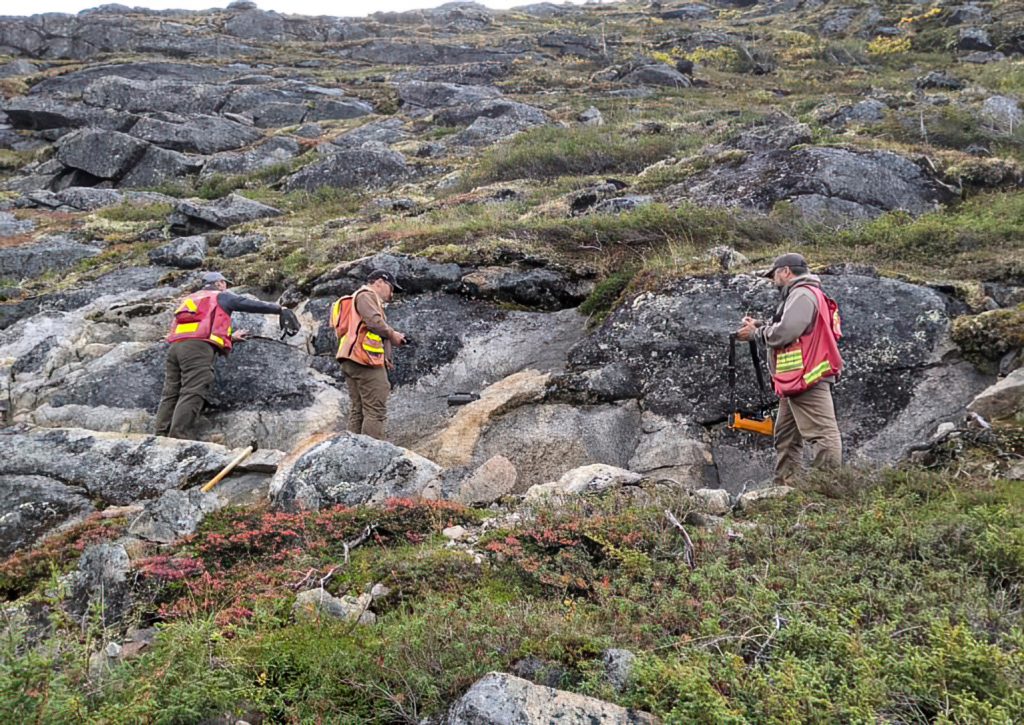Labrador Uranium CEO steps down

Labrador Uranium Inc. [LUR-CSE, LURAF-OTCQB, EI1-FRA] on Tuesday said Stephen Keith has stepped down as CEO of the company. It said Executive Chairman Philip Williams has assumed the role of interim CEO until a successor is found.
“I take the position enthusiastically, recognizing the tremendous opportunity LUR has to both verify the historic uranium and vanadium mineral resources on the project as well as to potentially make new discoveries,’’ Williams said in a press release. “The company is well funded for its 2023 exploration program which will build on the results from last year, as well as leverage the tremendous amount of data accumulated on the very large project area.’’
On December 30, Labrador Uranium Inc. [LUR-CSE, LURAF-OTCQB, EI1-FRA] shares closed at 33 cents and currently trade in a 52-week range of $1.55 and 23 cents.
Labrador Uranium is engaged in exploration and development of uranium projects in Labrador Canada and holds a dominant land position covering 152,825 hectares in the Central Mineral Belt (CMB) in central Labrador and the Notakwanon Project in northern Labrador.
The CMB Project area surrounds several uranium prospects, including Paladin Energy’s Michelin deposit. Currently, the company is advancing the district-scale CMB Project, which includes the Moran Lake and Mustang Lake deposits. The 100%-owned Moran Lake project hosts an historic indicated resource of 5.2 million pounds of U308 and 42.8 million pounds of Vanadium. On top of that is an historic inferred resource of 4.4 million pounds of uranium and 93.6 million pounds of Vanadium.
However, the company has said a thorough review of all historical data performed by a qualified person, along with additional exploration work to confirm results, would be required to produce a current mineral resource estimate that would meet current NI 43-101 standards of disclosure.
Uranium mineralization in the area is structurally controlled, typically hosted within fracture systems and to a lesser extent within shear zones. At Moran Lake uranium mineralization mainly occurs in two distinct zones, referred to as Upper C and Lower C.
The Upper C also contains vanadium mineralization hosted mainly by hematized and brecciated mafic volcanic rocks and brecciated gabbro or diabasic intrusives.
The company holds a 66% interest in the Mustang Lake project, which hosts several uranium prospects consisting of numerous radioactive boulders, and lesser mineralized outcrop. Labrador Uranium has said the project has the potential for IOCG-style mineralization and is host to the highest lake-sediment value for uranium within the entire Michelin-Jacques Lake region. Past diamond drilling intersected uranium values of 9.11 metres of 0.12% U308.
The Notakwanon Project is located in northern Labrador, approximately 60 kilometres west of the Labrador coast. The project is accessible via float plane or helicopter from Hopedale, Nain or Happy Valley-Goose Bay.
Altius Minerals completed a grassroots exploration program in 2006, which resulted in the discovery of a style of uranium mineralization that is unique in Labrador. Previous exploration work identified a cluster of uranium prospects with greater than 20 occurrences. Three main zones of high-grade uranium mineralization have been identified, including:
- Rumble Zone, where grab samples have returned values of up to 3.49% U308. Saw cut channel samples have yielded up to 0.48% U308 over 2.5 metres.
- Old School Zone, where grab samples have yielded up to 2.08% U308.
- Notak-1, where samples have yielded up to 1.81% U308.
